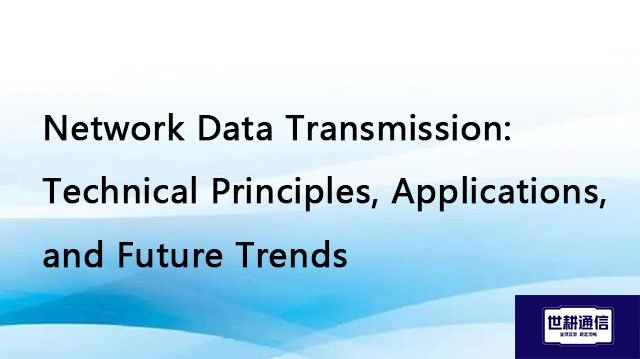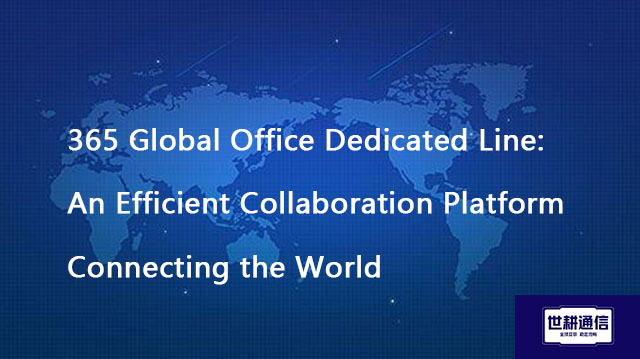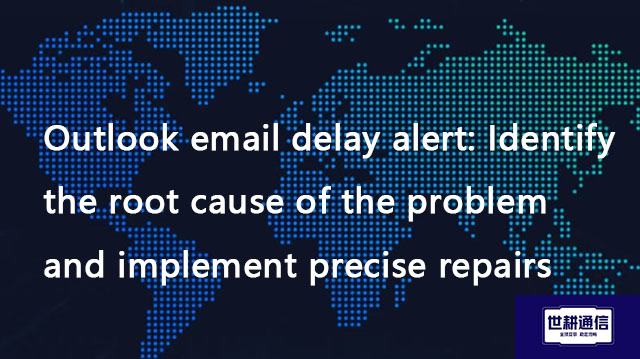Network Data Transmission: Technical Principles, Applications, and Future Trends//Global IPLC service provider of Shigeng Communication
一、In today's highly interconnected world, network data transmission is the core of information exchange. Whether it's web browsing, video calling, cloud computing, or Internet of Things (IoT) and artificial intelligence (AI) applications, they all rely on efficient and stable data transmission technologies. This article will explore the basic principles, key technologies, protocol systems, optimization methods, and future development directions of network data transmission.
1. Basic principles of network data transmission
1 . The basic process of data transmission
Network data transmission usually includes the following key steps:
Data encapsulation: Application layer data is encapsulated layer by layer (such as segmentation, IP addressing, MAC frame encapsulation, etc. in the TCP/IP protocol stack).
Signal coding and modulation: digital signals are coded (such as NRZ, Manchester coding) or modulated (such as QAM, OFDM) to adapt to the transmission medium.
Transmission and routing: Data packets are forwarded through network devices (switches, routers) and ultimately reach the destination device.
Data unpacking: The receiver parses the data layer by layer to restore the original information.
2. Two main ways of data transmission
Circuit Switching: Establishing dedicated communication paths (such as traditional telephone networks), suitable for scenarios with high real-time requirements but low resource utilization.
Packet Switching: Data is divided into multiple packets for independent transmission (such as in IP networks), which improves bandwidth utilization but may introduce latency and reordering issues.
2. Key Technologies for Network Data Transmission
1 . Multiplexing technology
Time Division Multiplexing (TDM): Channel allocation based on time slices (such as traditional telephone networks).
Frequency Division Multiplexing (FDM): Different signals occupy different frequency bands (such as Wi Fi, 5G).
Wavelength Division Multiplexing (WDM): In optical fiber communication, multiple signals are transmitted at different wavelengths.
Code Division Multiple Access (CDMA): Distinguishing users through encoding (such as 3G mobile communication).
2 . Error control and traffic management
Error detection and correction: CRC check, Forward Error Correction (FEC), ARQ (Automatic Repeat Request).
Traffic control: Sliding Window Protocol (TCP), congestion control algorithms (such as TCP Reno, BBR).
3. High speed transmission technology
Fiber optic communication: Single mode fiber optic supports speeds of over 100Gbps and is the core technology of backbone networks.
5G and Wi Fi 6: 5G provides low latency (<1ms) and high speed (20Gbps), while Wi Fi 6 enhances multi device concurrency capability.
Data Center Interconnection (DCI): Using optical transmission technology (such as 400G Ethernet) to achieve ultra large scale data exchange.
3. Network Protocol and Data Transmission
1. TCP/IP protocol stack
Main protocol functions of hierarchy
Application layer HTTP, FTP, DNS provide user services (such as web browsing, file transfer)
Transport Layer TCP, UDP End to End Reliable Transport (TCP) or Low Latency (UDP)
Network layer IP, ICMP routing addressing, packet forwarding
Data link layer Ethernet, Wi Fi frame encapsulation, MAC addressing
Physical layer fiber optic, twisted pair, wireless bit stream transmission
2 . Emerging protocols and technologies
QUIC (HTTP/3 based on UDP): reduces handshake latency and improves web performance.
SRv6 (Segmented Routing IPv6): Optimize the efficiency of wide area network (WAN) data transmission.
Time sensitive network (TSN): guarantee the real-time demand of industrial Internet.
4. Data transmission optimization and security
1 . optimize technique
Data compression: Reduce transmission volume (such as Gzip, Brotli).
CDN (Content Delivery Network): Cache static content to reduce latency.
Edge computing: data processing is close to users, reducing return traffic.
2 . Security mechanism
Encryption transmission: TLS/SSL (HTTPS), IPSec (VPN).
Identity authentication: OAuth, JWT, zero trust security model.
Anti quantum encryption: Dealing with the threat of future quantum computing (such as Lattice based Crypto).
conclusion
The technology of network data transmission is still evolving, from wired to wireless, from ground to space, from classical networks to quantum communication, and its development directly affects the progress of the global information society. In the future, with the popularization of technologies such as AI, metaverse, and autonomous driving, the demand for high-speed, low latency, and high security data transmission will become more urgent, driving continuous innovation in network technology.

二、Shigeng Communication Global Office Network Products:
The global office network product of Shigeng Communication is a high-quality product developed by the company for Chinese and foreign enterprise customers to access the application data transmission internet of overseas enterprises by making full use of its own network coverage and network management advantages.
Features of Global Application Network Products for Multinational Enterprises:
1. Quickly access global Internet cloud platform resources
2. Stable and low latency global cloud based video conferencing
3. Convenient and fast use of Internet resource sharing cloud platform (OA/ERP/cloud storage and other applications
Product tariff:
Global office network expenses | Monthly rent payment/yuan | Annual payment/yuan | Remarks |
Quality Package 1 | 1000 | 10800 | Free testing experience for 7 days |
Quality Package 2 | 1500 | 14400 | Free testing experience for 7 days |
Dedicated line package | 2400 | 19200 | Free testing experience for 7 days |







